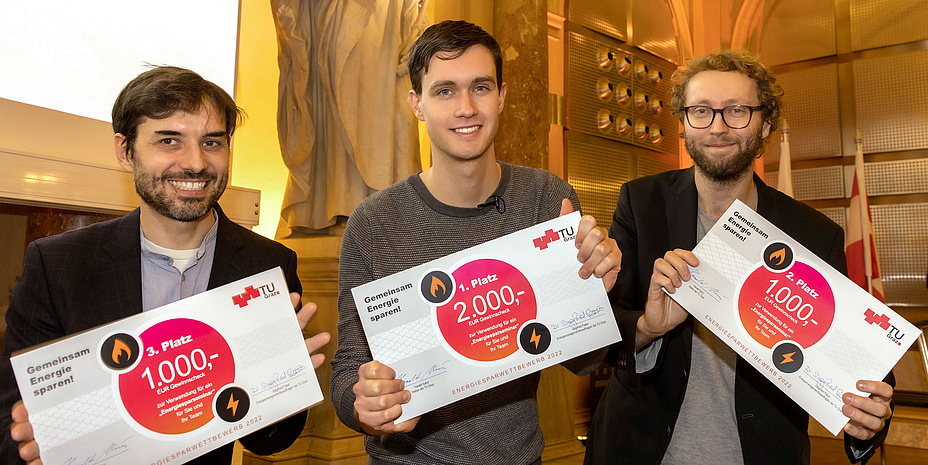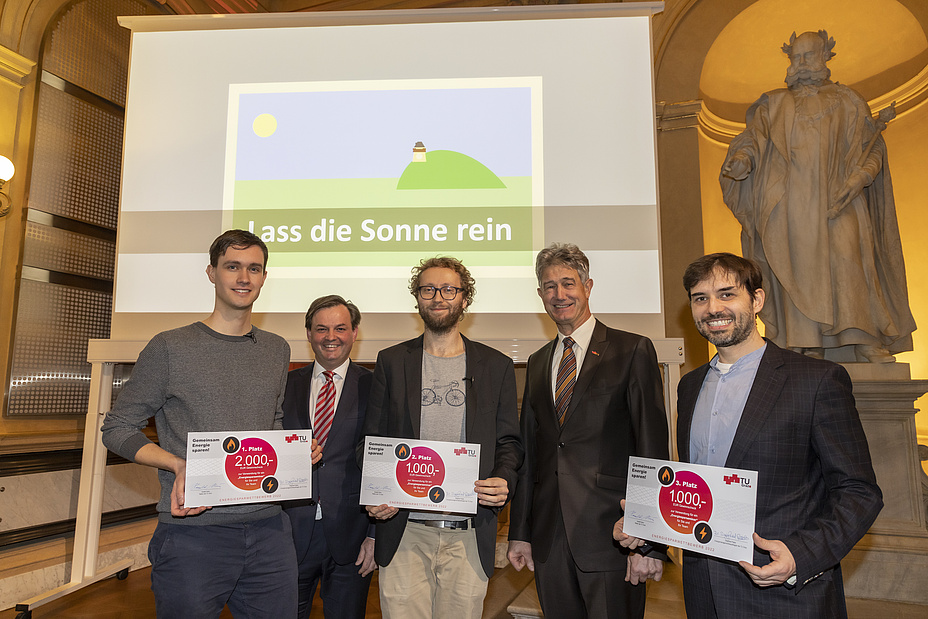How energy saving can succeed

Saving energy affects us all. In the framework of the project Climate Neutral TU Graz 2030, TU Graz has taken various energy-saving measures which sometimes stand in contrast to the desirable comfort we are all used to – whether in heating, cooling or lighting. It is therefore all the more gratifying that these savings in heating and energy are now having a notable effect. For example, the district heating demand of our university from September 2022 to December 2022 was able to be reduced by a huge 23 per cent compared to the last few years. Taking into account the mild winter to date, the figure in real terms is at least 19 per cent. As a result, TU Graz has saved 300,000 euros gross in these four months. The electricity demand could also be minimized by 4.5 per cent in the same period (compared to 2022), which is 75,000 euros in gross savings. Thank you all for your support!
But there are many ways to save energy – and that’s why TU Graz launched an energy-saving competition in the autumn. The ideas of TU Graz employees were extensive and ranged from turning off lights to retrofitting motion sensors to using waste heat. 71 ideas were submitted, and a nine-member jury selected the top three, who pocketed cash and non-cash prizes worth up to 2,000 euros. The award ceremony for the three winners took place at the end of January in the assembly hall of TU Graz. “I am very enthusiastic about the many energy-saving tips from our employees," says Rector Harald Kainz. "Graz University of Technology is vigorously implementing measures for the careful use of energy and our resources. The great ideas and best practice examples of our employees help us decisively."

Top prize (in the category Buildings): “Let the sun shine in”
The top prize goes to Robbin Steentjes from the Institute of Solid State Physics for his proposal “Let the sun shine in”. In it, he appeals to all employees for a conscious use of the available shading possibilities – especially in the cold months. Steentjes calculated the amount of energy falling on windows and showed that heating costs can be saved thanks to this solar energy. In around a third of all TU Graz buildings shading is controlled externally, but there is no uniform setting at TU Graz. In principle, the blinds are closed once a day in summer and fully or partially opened in winter. Thanks to Steentjes’ idea, a pilot test is now starting to make the shading settings dependent on the outdoor temperature and not on the date. The video (see below) submitted by Robbin Steentjes offers great suggestions for all the shades that can be set directly by TU Graz employees. The researcher also gives insights into his award-winning energy-saving tip in an interview.
Second place (in the category Mobility): “Car free day”
Stephan Keller from the Institute of Interactive Systems and Data Science won second place with his idea of a car-free day. With one car-free day per month on all TU Graz campuses, he calculated, a good seven tonnes of CO2 could be saved in a year. Here, of course, the question arises, what is stopping the greater use of public transport? In the framework of the TU Graz mobility concept TU Graz would like to eliminate this. TU Graz is currently working intensively on the expansion of the e-charging infrastructure and the debiting of charging costs, but the main goal remains to motivate employees to switch to cycling, public transport or carpooling.
Third place (in the category Energy): “Campus thermal / cold storage”
Wolfgang Richter from the Institute of Hydraulic Engineering and Water Resources Management wants to use existing resources for energy storage. His idea is as follows: the approximately 1,000 m3 of water in the reservoir of the hydraulic engineering laboratory at Inffeldgasse 26 could be effectively used for seasonal heat and cold storage. Wolfgang Richter’s idea has now been taken up as part of the energy laboratory Innovation District Inffeld and the integration of this storage option has been tested.
Continuing to save energy together
“We will implement the many energy-saving tips from our employees as best we can,” says Siegfried Pabst, Energy Management Officer at TU Graz. “When renovating buildings, we – together with BIG – prioritize thermal insulation, photovoltaics and external sun protection. We will look into more complex projects such as a heat recovery system in the “Zeitstandlabor” or the partial shutdown of the emergency lighting systems.”
Even many small measures taken by each individual can help to save energy together. A leaflet gives practical tips on which steps can help: from an aware use of lighting to periodic ventilation during the cold months. Let’s continue to master the energy crisis together. A big thank you to you all for your support!
Kontakt
Siegfried PABST
Dipl.-Ing.
TU Graz | Gebäude und Technik
Inffeldgasse 31
8010 Graz
Tel.: +43 316 873 6537
siegfried.pabst@tugraz.at





